The Churn
Creative Artist DL Warfield on Making Black History at LaFace Records and Telling America’s Ongoing Story with Flags
Mike JordanFebruary 18, 2021
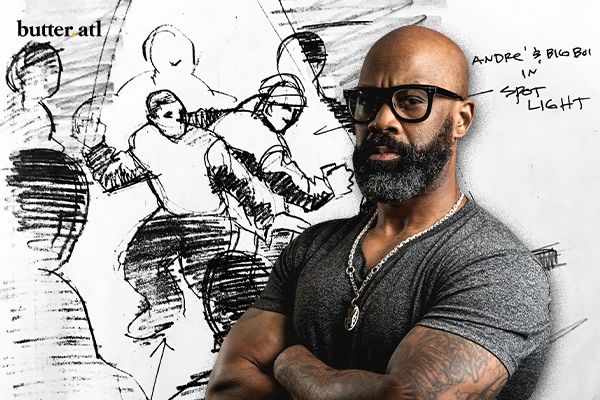
D.L. Warfield’s career at Atlanta’s legendary LaFace Records began with a terrorist threat. At least that was the creative message he wanted to send.
The St. Louis native was already well on his way to a career as a designer, having worked as a fashion designer for the famous retail store Oak Tree in the late ‘80s and early ‘90s, as well as a fashion line for the hip-hop record label Tommy Boy in New York City.
In 1995 he heard about a job opening for a creative director at LaFace, and he wanted to make sure he got the attention of the company’s founders, L.A. Reid and Babyface.
So he sent his portfolio, but in a package made to look like an explosive. The tagline on the package read “Hire DL WARFIELD for the job or else.” People around the LaFace offices at the time saw it and said “DL Warfield is the bomb.” It was the ‘90s.
He got the gig.

During the half-decade that DL ran the creative department at LaFace, he and his team of designers generated visual packaging, styling and other creative ideas that would help make some of the biggest stars in the world shine, and still stand today as classic artistic representations of classic hip-hop and R&B albums.
From Goodie Mob to OutKast, from Pink to TLC, and for many other superstar musical acts, it was DL who oversaw much of what LaFace wanted the public to see and believe. And being an artist at heart, DL says that many times he was more than just a creative, he was also a negotiator, because unlike the politics of a signed artist dealing with executives, there was no adversity between the creative department and LaFace’s stars.
“A lot of the time I was a middleman between the record label and its artists,” he says. “I had two clients to satisfy. Sometimes it was tough to get them on the same page about visual presentation because the label would have its own vision. That was probably the most challenging aspect.”
Some of the label’s artists had free-flowing creative expression, he says, so the approval process was easier. He says LaFace president L.A. Reid’s trust allowed him to visually articulate ideas for certain acts, particularly OutKast, which led to DL sketching what would become the group’s award-winning, comic-book-inspired cover for their sophomore album, ATLiens.
“It’s not often an artist has an idea of what they want the cover to be. They might have sketches of concepts, but it wasn’t usually thematic.”

DL says that he and his staff in the LaFace creative department were reading a lot of comic books around the time OutKast was wrapping up the recording of ATLiens. Big Boi and Andre 3000 walked into their shared office one day having figured out what they wanted the title of the album to be. DL took it to L.A., and suggested a comic book for the CD booklet, and L.A. gave him the green light.
“L.A. was more classy and traditional,” DL says. “Cool shit wasn’t really his wheelhouse. I wouldn’t say he didn’t want to be involved in the project, but he was just letting us cook.”
DL brought in an outside illustrator who had worked with Spawn creator Todd McFarland to collaborate with members of his team, who handled coloring and other aspects. He then hired Dungeon Family poet Big Rube to write the story for the comic book.
The results:
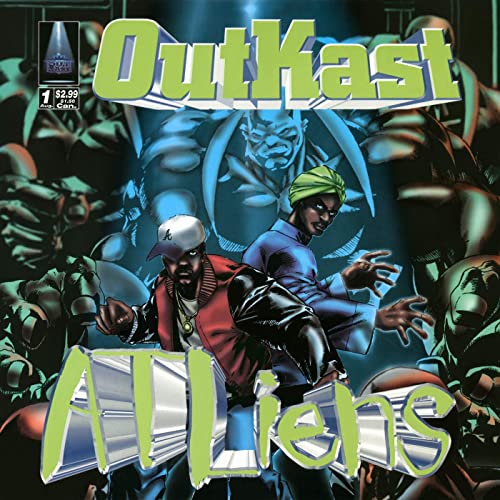
Idea generation was always very organic with OutKast, he says. “Those guys are so creative they could carry it out. From a styling standpoint, we didn’t really have to do anything for OutKast except give them a budget. They would go shop and get their own shit.”
He says he did give a bit more guidance for Stankonia’s album design, since this was around the time Andre began wearing blond wigs, while Big Boi remained closer to Atlanta’s street style standards. He says he advised them to wear whatever they wanted, and they went out and purchased things that represented them accordingly after discussing color palettes that would create a matching look.
“If you have two guys that go shopping separately, when you’re trying to compose a cover, things might not line up. And I probably wouldn’t trust either one of them to shop for the other.”
The resulting photography remains iconic, and can be seen today in a mural interpretation on the wall of Atlanta sneaker shop Wish ATL.
As fans know, Goodie Mob and OutKast, both members of the venerated Dungeon Family, were similar in nature but very different in approach and style. And many times there would be crossover from what Goodie Mob liked and wanted to execute, and what OutKast liked.
“Everybody always wanted to do the Huey P. Newton shot, with the wicker chair,” he remembers with a laugh. “That showed up in every OutKast and Goodie Mob photo shoot, to some degree.”
DL says he always had fun balancing the uniqueness of T-Mo, Khujo, Big Gipp and Ceelo, but their individualism made it a challenge on albums like Still Standing and World Party.
“Visually, working with those guys, they were drawn to things that were so unique, and it took a bit to make sense. They were easy to work with — no egos or anything — but when you have to take four people and make one cover, it’s a little tough. But creatively they really pushed themselves, and I always thought their shit was dope.”
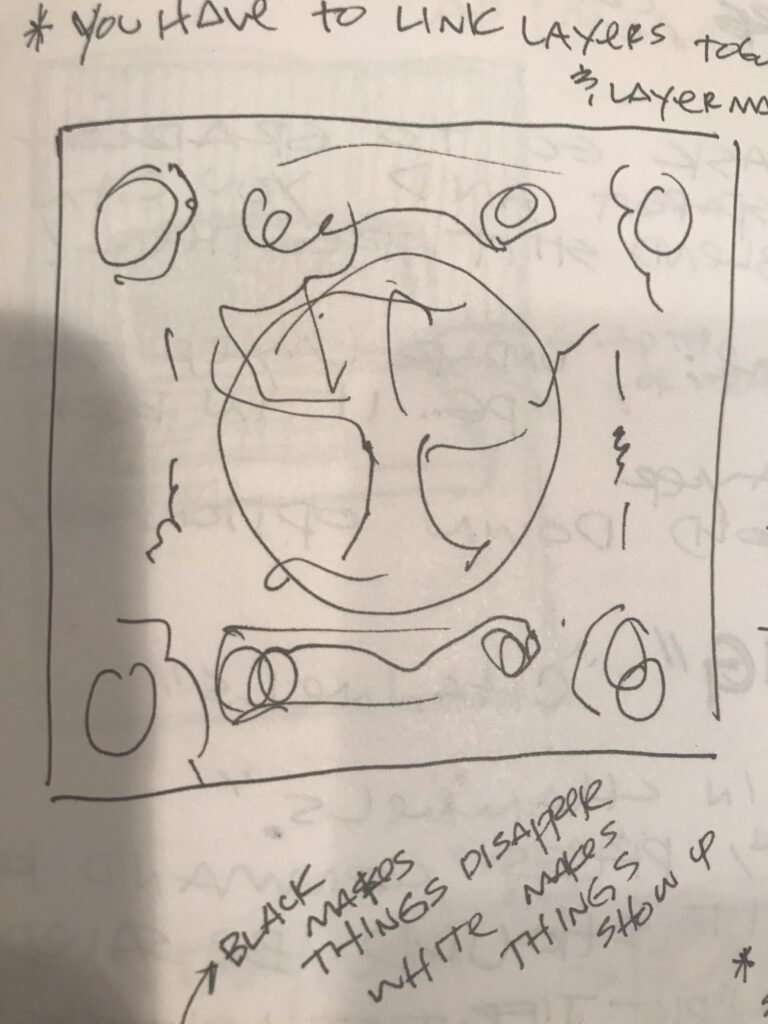
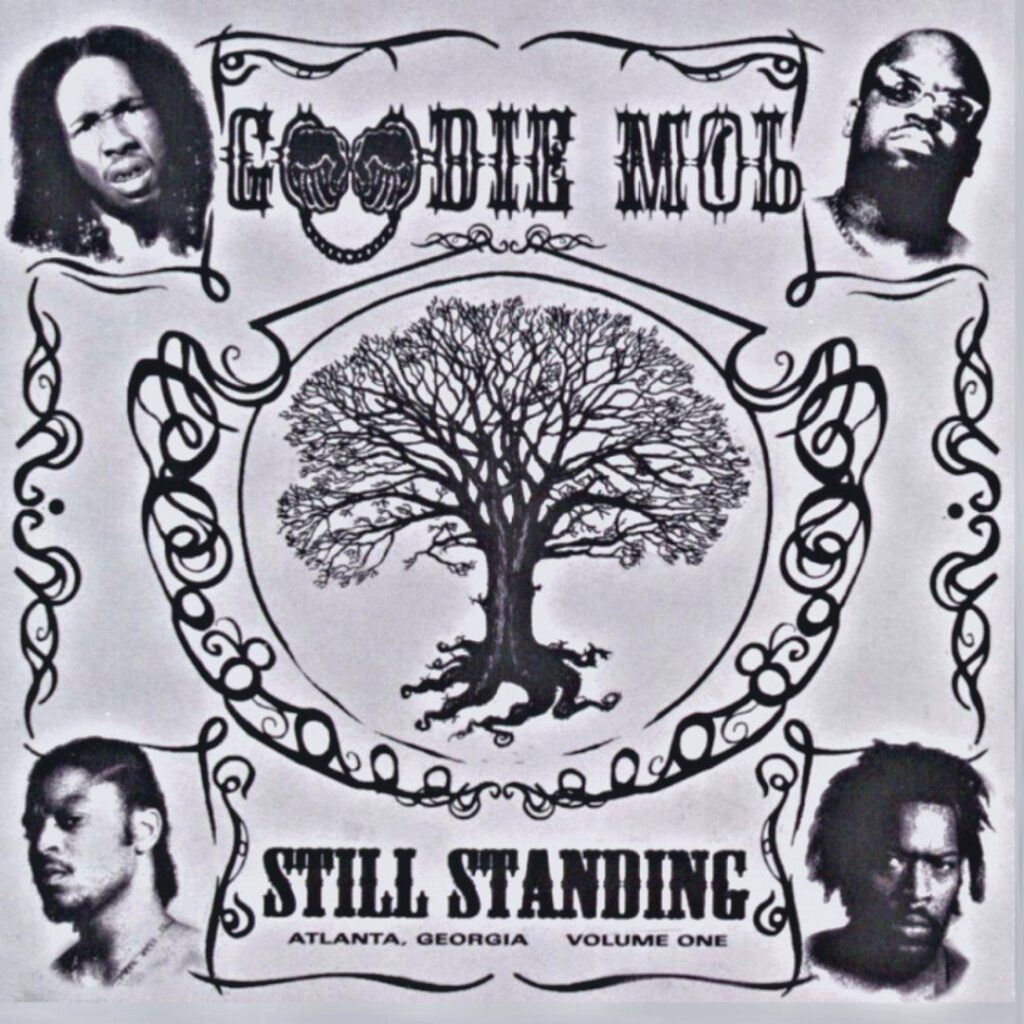
Usher was another star who DL worked with closely. The R&B star, who rocketed to fame after his sophomore album My Way, was experimenting with a new look for his third album, and it was not exactly working out.
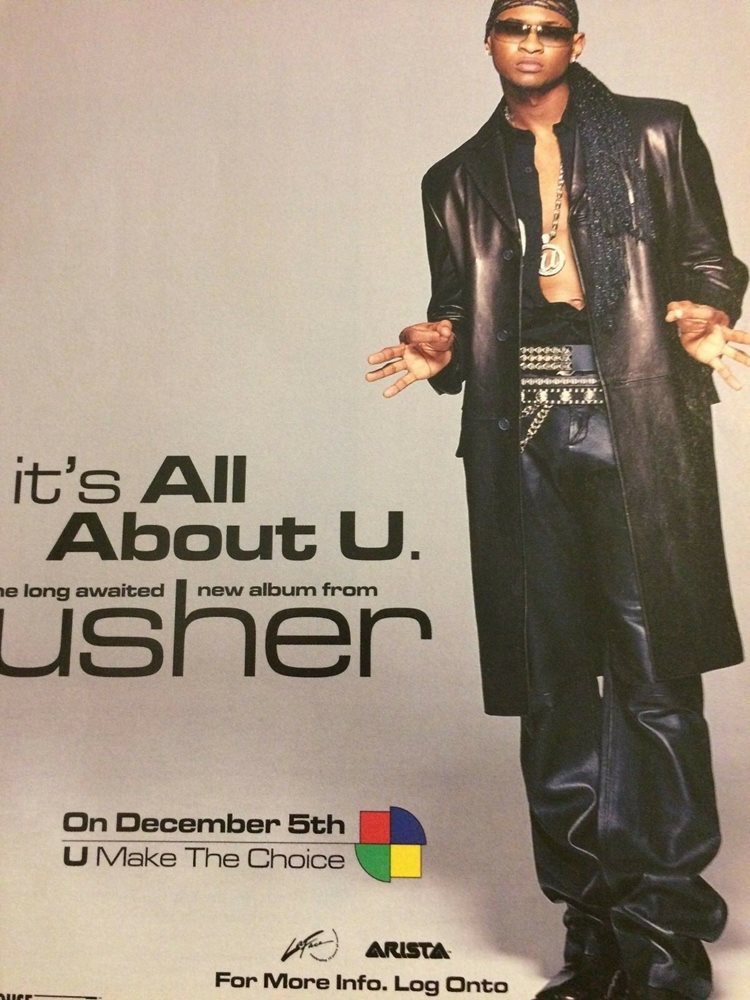
“Before 8701 came out, he looked like he was in The Matrix. He had on so much shit — long leather jackets and wristbands… K.P. [a.k.a. Kawan Prather, or KP The Great, longtime LaFace A&R] said ‘It looks like it takes him an hour and a half to get dressed.’ I died.”
Not many people outside LaFace know there was an album called All About U (featuring the single “Pop Ya Collar”) that was wisely scrapped and revamped into what became Usher’s heralded third album 8701. DL would go on to help with the direction of 8701, as well as Usher’s Here I Stand and other projects.

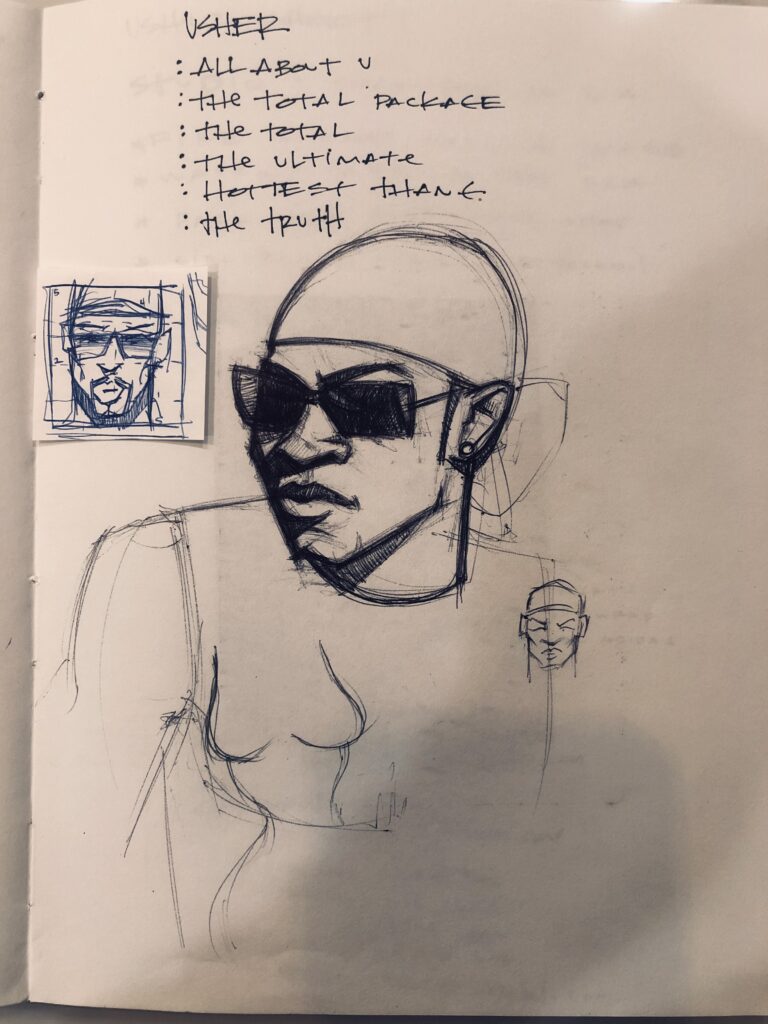
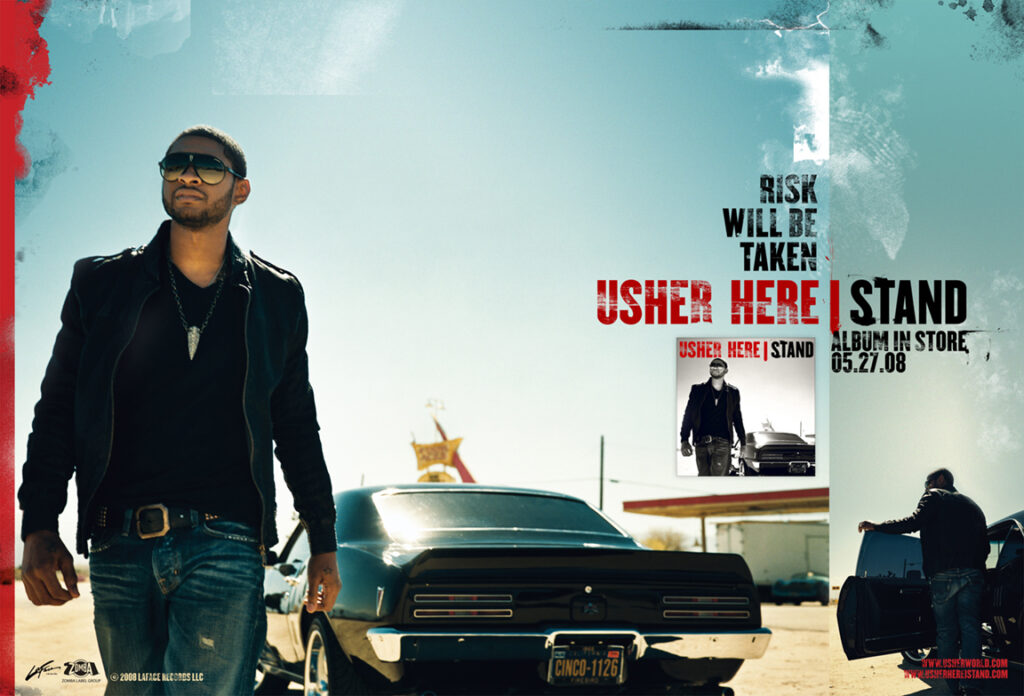
With other megastars, such as Pink and TLC, DL says he loved the fact that they artists were always willing to try something new. It was DL who convinced Pink, who had been signed to LaFace as a member of a three-member female group called Choice, to dye her hair the color of her moniker once it was decided that she would work best as a solo act.
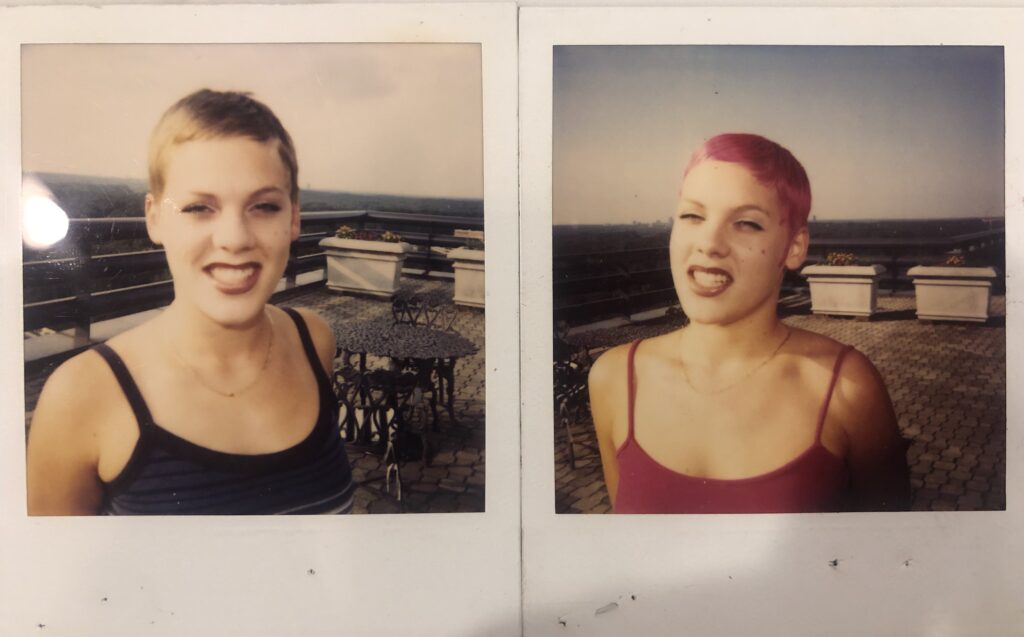
Then there’s TLC, who DL inherited for their third album, Fanmail.
“I loved working with those girls,” he says. “You couldn’t do anything that was too creative. They were 100% all-in, as long as that shit was wild and dope.”
He says the concept for the Fanmail cover, which was inspired by the record’s super-digital sound and the aim to show that TLC had leveled up after CrazySexyCool, came to him more than a year before they finished and released the album.
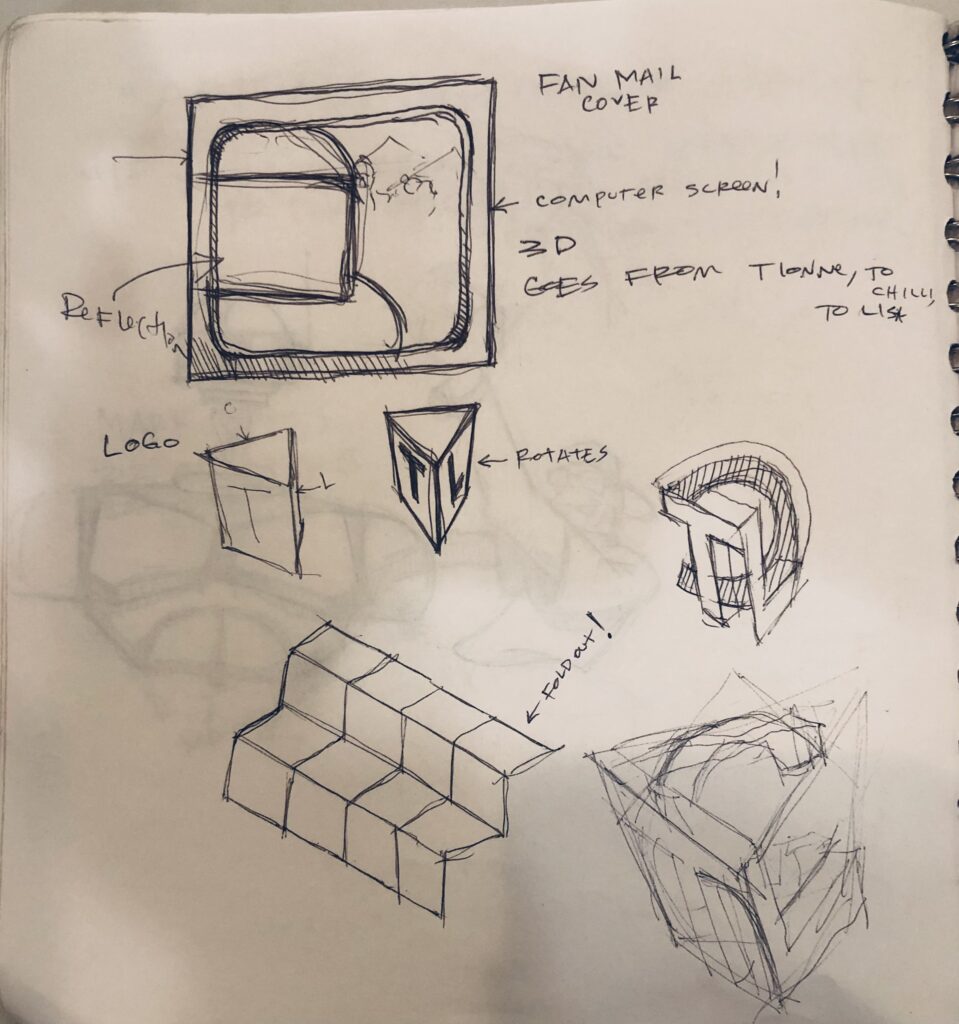
“I used to subscribe to photography magazines, and I saw the work of Seb Janiak, who was responsible for that chrome android look. I took it to L.A’s office and told him that’s what we should do.” L.A. was into it but not exactly fired up, so DL took photos of T-Boz, Left Eye and Chilli, manipulated them in the style of Janiak, and had them printed and delivered to each group member.
“They lost their minds,” DL recalls of TLC’s enthusiasm for the concept. “L.A. called and asked what they were talking about, and I showed it to him, and he was like “Hell yeah.”

DL says his job was made easier by the fact that he loved and believed in the music being made by the LaFace artists he worked with. And with every project, he always asked himself how he could make the music and the artists stand out even better.
It’s all helped him to continue working with LaFace artists to this day, most recently with T.I. on his recent album, The L.I.B.R.A.
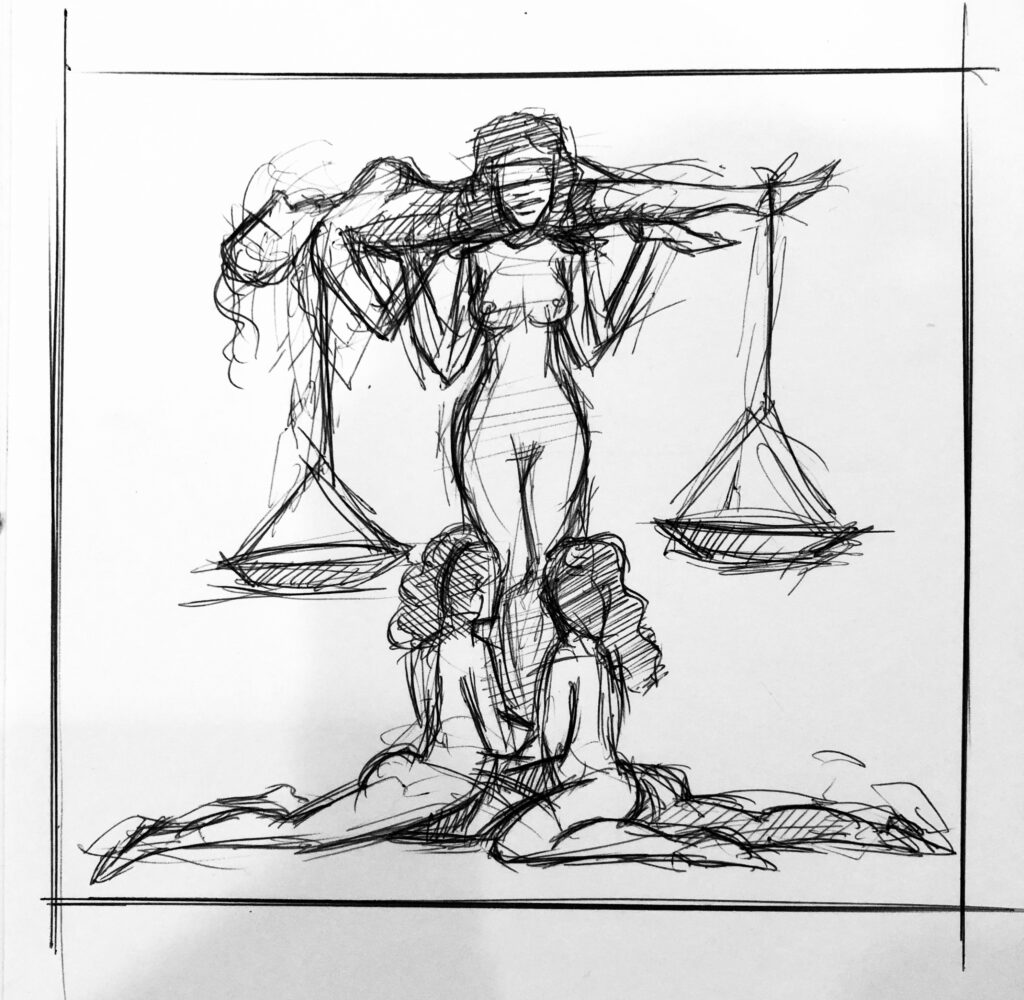
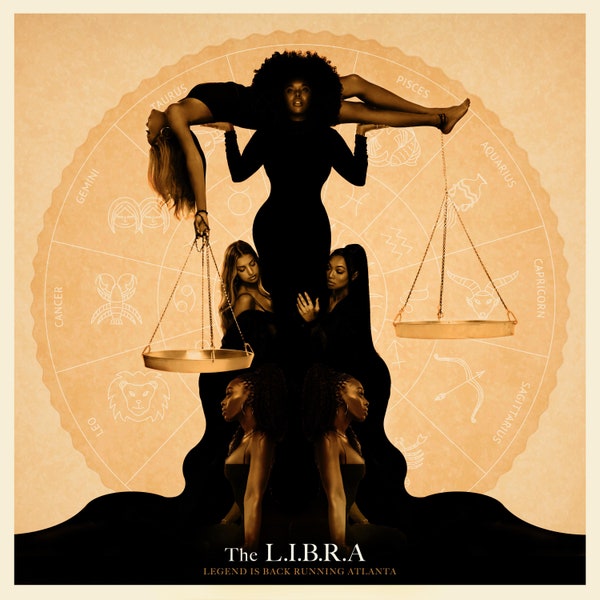
“He has been one of the artists that not only supported and endorsed me from a creative director and designer standpoint, but he probably owns more of my fine art than anybody,” DL says of his friend Tip.
“He’s been a huge champion of me, and working with him creatively over the years, and seeing how he has grown, has been a pleasure to watch.”
To say DL remains busy today is a clear understatement. In 2012 he launched his American Flag Remix series of mixed-medium interpretations of the U.S. flag. They’ve since been purchased by a long list of high-profile clients, including T.I., Mercedes-Benz Stadium (there’s a version for both the Atlanta Falcons and Atlanta United inside), and businesses across Atlanta such as restaurants like 10 Degrees South and Agency, and The Gathering Spot.
Each flag is an experiment in ideas that leads to unexpected creative places, he says, including his most recent addition to the collection: “The United States of We Built This Shit For Free,” which speaks to America’s inescapable history of enslaving African captives through rusted chains wrapped around the heavy metal interpretation.
“I didn’t have any preconceived notions on where it was taking me,” he says of the flag, “but I love where it is now.”

He just released 50 limited prints of the original, on brushed aluminum. Anyone who purchases one of the prints will have their name engraved on the front of the original before it goes into a museum, which he’s lined up for 2022.
And even after LaFace shuttered in the early 2000s, he continued to work on album art for a variety of music industry projects, including albums by Swizz Beatz, Michael Jackson, and the soundtrack to Creed II.
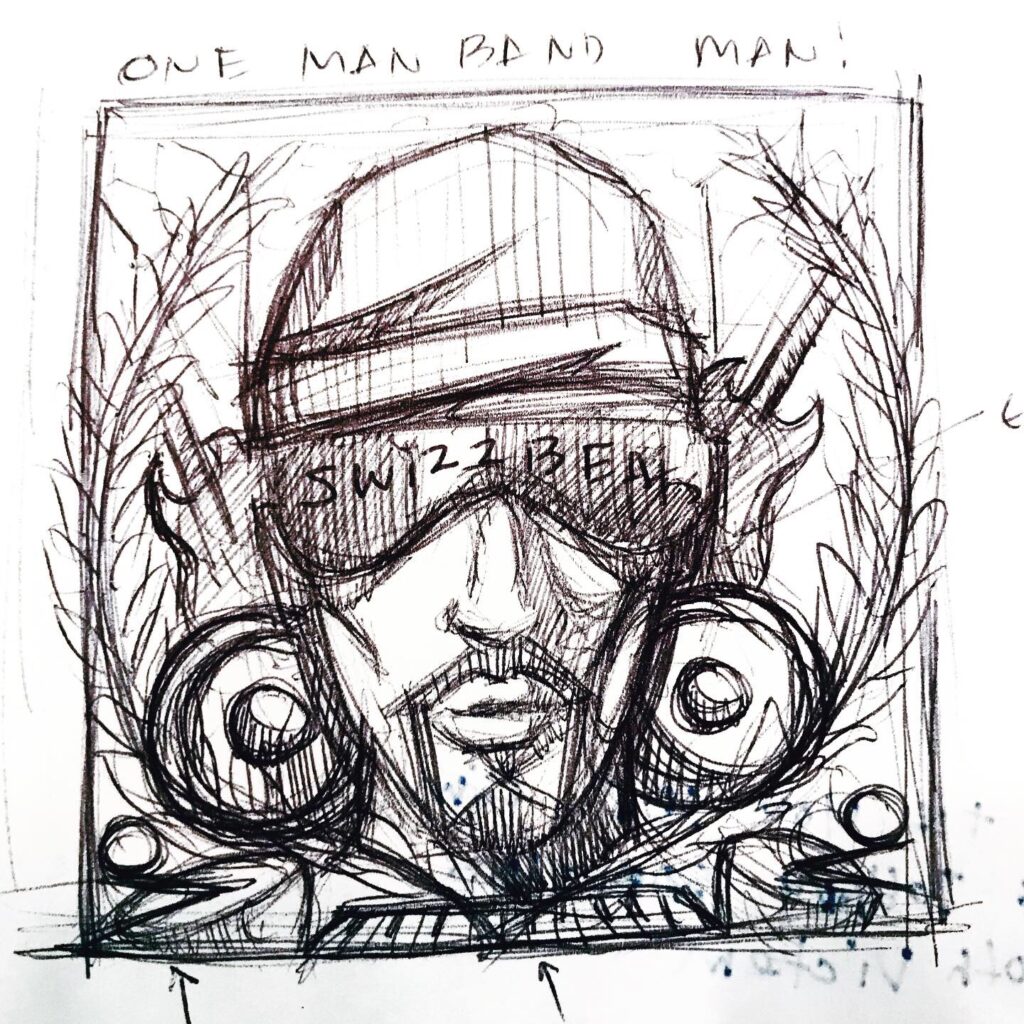


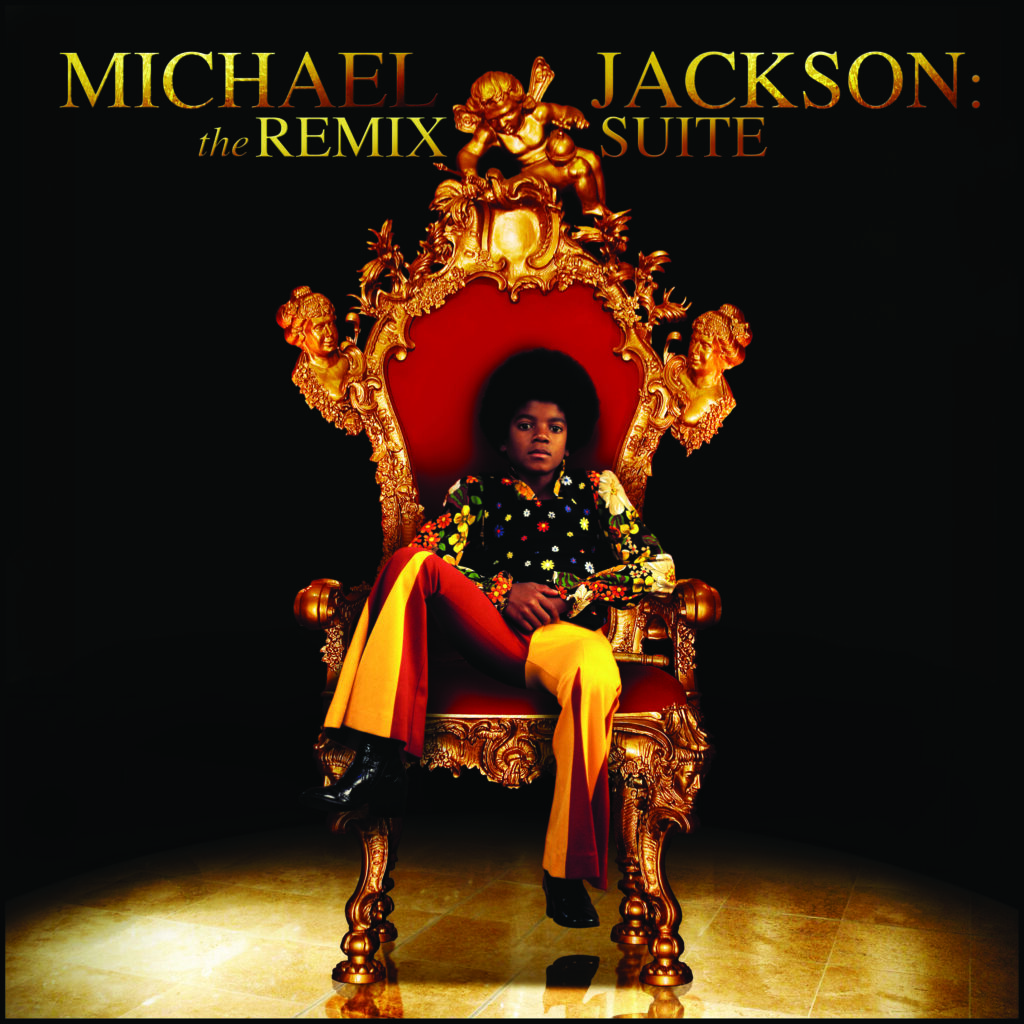
“A lot of my entrepreneurial success really stemmed from how dope the LaFace artists were,” he says.
“While I was at LaFace, I was freelancing for other labels and brands, but working with the high-level artists we had put me in conversations. People wanted to know ‘Who’s creating this?’ I challenged myself and the artists to think bigger, but the greatness of the artists definitely helped me in business.”
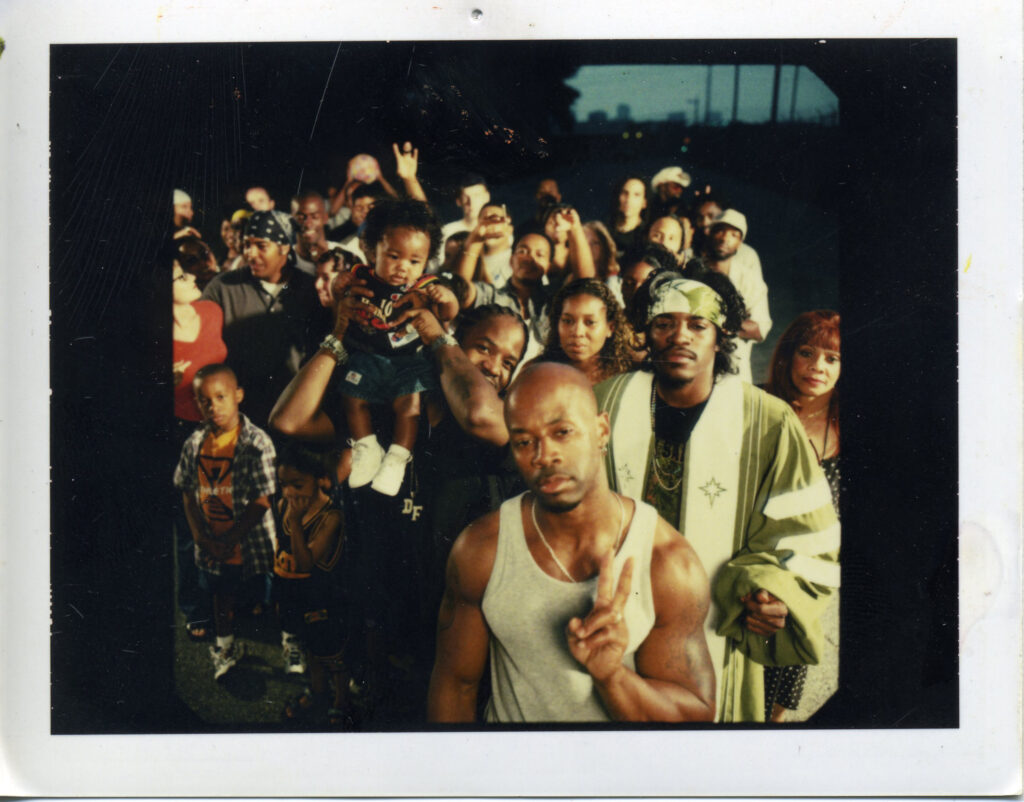
It’s continuing education for a man who went from college football standout to fine arts graduate of Washington University, to fashion and furniture designer, to LaFace Records, to business owner and perennial creative leader. He’s still learning, because he’s still finding new ways to bring vision into existence.
“I’ve been fortunate to have the mindset of a consummate risk-taker. Because I don’t know everything, I’m willing to try anything.”
Find DL online and view/buy art at DLWarfield.com.

